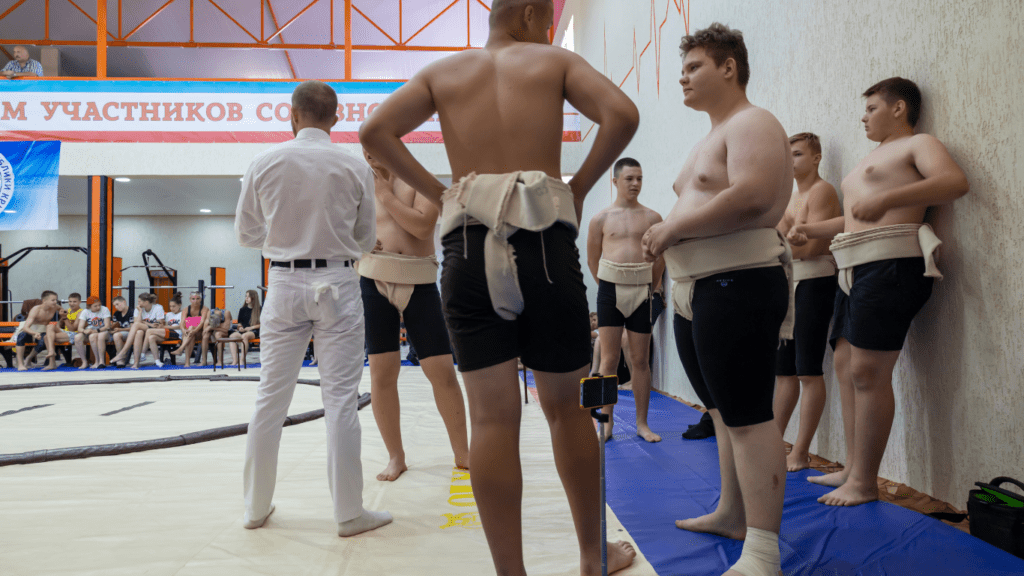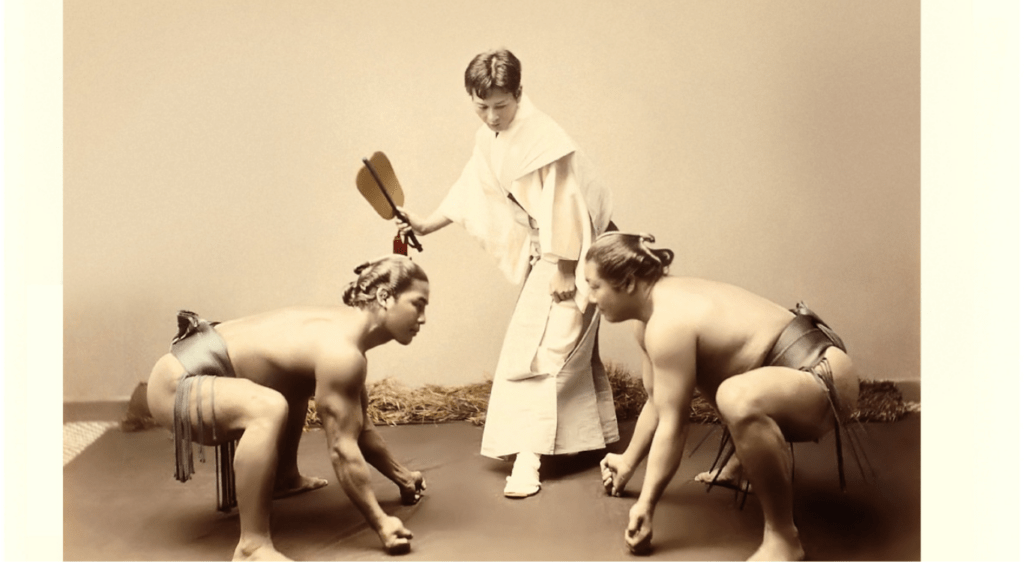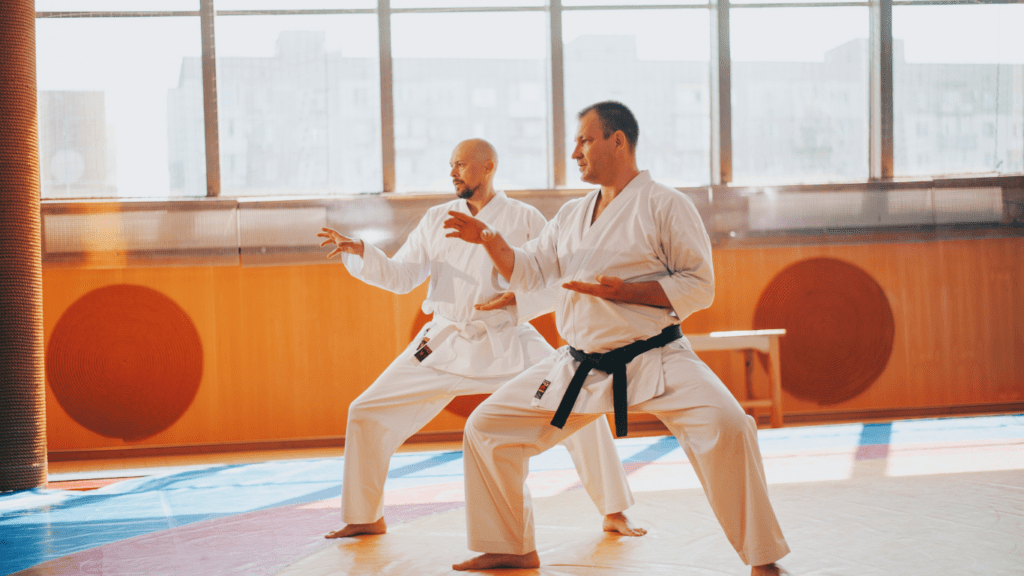The Roots of Sumo Wrestling in Japan
Sumo wrestling, with its deep roots in history and mythology, is integral to Japanese culture. This section explores how traditional beliefs and historical progress shaped this revered sport.
Ancient Origins and Mythology
Sumo wrestling traces its origins back over 1,500 years. According to Japanese mythology, the gods Takemikazuchi and Takeminakata wrestled to settle who would control the Japanese islands, a tale that highlights sumo’s divine connections.
Sumo was part of Shinto rituals to ensure bountiful harvests and honor the gods. Early sumo matches, performed in shrines, served as prayers and offerings, blending spiritual and martial elements.
Evolution From Ritual to Sport
While sumo started as a religious ritual, its gradual transformation into a sport began during the Nara period (710-794 AD). Matches moved from shrines to courtiers’ gatherings, and rules formalized to ensure fairness and competition.
In the Edo period (1603-1868 AD), sumo became professional, with established stables and training regimes. The sport’s popularity soared, and it evolved into the structured tournaments seen today.
The essence of ritual still pervades modern sumo, with pre-match ceremonies and symbolic gestures reflecting its sacred heritage.
Cultural Implications of Sumo Wrestling

Sumo wrestling, deeply rooted in Japanese culture, holds various cultural implications. Its significance goes beyond the physical competition, impacting societal values and religious practices.
Sumo as a Reflection of Japanese Values
Sumo wrestling encapsulates many core Japanese values. Discipline, respect, and perseverance stand as pivotal principles within the sport. Sumo wrestlers, or rikishi, adhere to rigorous training regimes and strict lifestyle codes, exemplifying dedication.
Respect is evident in every match, from the ceremonial shikiri (pre-bout ritual) to the deep bows exchanged between competitors. These rituals emphasize the importance of respect for opponents and tradition.
Perseverance, a key cultural trait, visible in the tireless efforts of young apprentices striving to attain higher ranks in the sumo hierarchy. Sumo, through its structure and practices, mirrors these deeply ingrained societal values.
Role in Religious and Festive Occasions
- Sumo wrestling integrates seamlessly with religious and festive occasions in Japan.
- Rooted in Shinto practices, sumo tournaments begin with purification rituals to honor the deities.
- Ceremonies, such as the dohyo-iri (ring-entering ceremony), are rich with symbolic gestures.
- The stomping of feet purges evil spirits, and the tossing of salt purifies the ring.
- Beyond religious ceremonies, sumo is celebrated during festivals.
- Events like the historical Natsu Basho (Summer Grand Tournament) held in Tokyo attract both locals and tourists. Sumo’s presence in these contexts underlines its role as a cultural cornerstone.
Symbols and Rituals in Sumo
Sumo wrestling in Japan encompasses numerous symbols and rituals that are deeply embedded in its practice. Each element carries historical significance and reflects the cultural heritage of Japan.
Significance of the Dohyo
The dohyo, or sumo ring, is central to sumo wrestling. Constructed from clay and covered with a layer of sand, it measures 4.55 meters in diameter.
The dohyo is considered sacred; it’s purified before each match with a ceremony that includes the scattering of salt to ward off evil spirits. This practice ties directly with Shinto beliefs, symbolizing purification and protection.
The elevated platform of the dohyo elevates the importance of the match, making it a significant focal point in the arena.
Rituals and Outfits Explained
Sumo incorporates numerous rituals steeped in tradition. Before each bout, wrestlers perform the shiko, a leg-stomping exercise to drive away evil spirits.
The clapping of hands serves to attract the attention of the gods. These rituals emphasize the spiritual aspect of sumo, connecting wrestlers with the divine.
The outfits worn by sumo wrestlers, known as mawashi, are belts made of heavy silk. During matches, wrestlers wear special ceremonial aprons called kesho-mawashi, adorned with intricate designs and symbols.
These aprons are only worn during formal ceremonies, highlighting the respect and honor embedded in sumo traditions. The choice of attire and the rituals performed contribute significantly to the cultural tapestry of sumo wrestling.
Sumo Today: Preservation and Change
While sumo retains deep historical roots, contemporary influences shape its practice and global regard. Changes ensure the sport remains relevant.
Modern Challenges and Adaptations
Sumo faces challenges from modern-day society, like the need to attract younger audiences and adapt to digital media.
The Japan Sumo Association (JSA) has introduced measures like live streaming of tournaments and interactive social media to engage worldwide fans.
Additionally, sumo schools now incorporate modern training techniques without compromising traditional practices.
Addressing health concerns, the JSA has implemented stricter regulations on wrestlers’ health and diet. There is also a growing emphasis on transparency and addressing issues like match-fixing and hazing, ensuring the sport’s integrity.
Sumo’s Influence on Global Perception of Japan
Sumo significantly impacts Japan’s global image, often serving as an ambassador of Japanese culture. International tournaments have been held in places like:
- United States
- Europe
- Brazil
promoting cross-cultural appreciation.
Documentaries and media coverage about sumo wrestlers’ lives have further expanded global interest. Many people recognize sumo as a symbol of Japanese tradition, thus elevating the nation’s cultural presence on the world stage.

